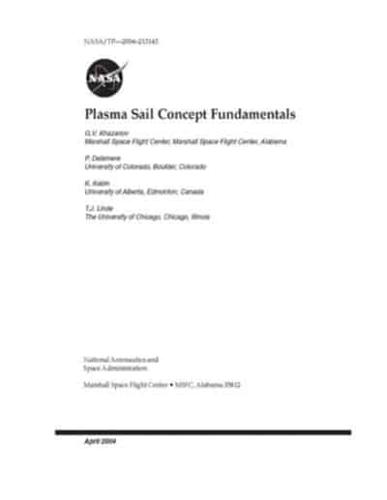Publisher's Synopsis
The mini-magnetospheric plasma propulsion (M2P2) device, originally proposed by Winglee et al., predicts that a 15-km standoff distance (or 20-km cross-sectional dimension) of the magnetic bubble will provide for sufficient momentum transfer from the solar wind to accelerate a spacecraft to unprecedented speeds of 50 C80 km/s after an acceleration period of 3 mo. Such velocities will enable travel out of the solar system in period of 7 yr almost an order of magnitude improvement over present chemical-based propulsion systems. However, for the parameters of the simulation of Winglee et al., a fluid model for the interaction of M2P2 with the solar wind is not valid. It is assumed in the magnetohydrodynamic (MHD) fluid model, normally applied to planetary magnetospheres, that the characteristic scale size is much greater than the Larmor radius and ion skin depth of the solar wind. In the case of M2P2, the size of the magnetic bubble is actually less than or comparable to the scale of these characteristic parameters. Therefore, a kinetic approach, which addresses the small-scale physical mechanisms, must be used. A two-component approach to determining a preliminary estimate of the momentum transfer to the plasma sail has been adopted. The first component is a self-consistent MHD simulation of the small-scale expansion phase of the magnetic bubble. The fluid treatment is valid to roughly 5 km from the source and the steady-state MHD solution at the 5 km boundary was then used as initial conditions for the hybrid simulation. The hybrid simulations showed that the forces delivered to the innermost regions of the plasma sail are considerably ( 10 times) smaller than the MHD counterpart, are dominated by the magnetic field pressure gradient, and are directed primarily in the transverse direction. Khazanov, G. V. and Delamere, P. and Kabin, K. and Linde, T. J. Marshall Space Flight Center NASA/TP-2004-213143, M-1103 PLASMAS (PHYSICS); MAGNETIC SAILS; PROPULSION SYSTEM CONFIGURATIONS; MAGNETOHYDRODYNAMICS; STEADY STATE; SOLAR WIND










